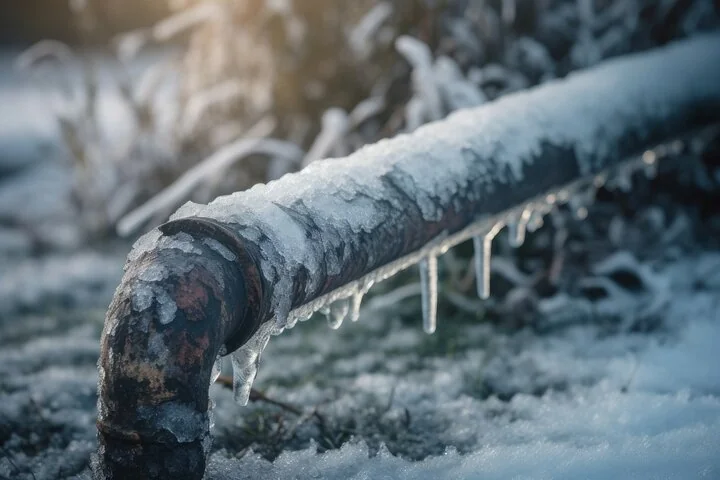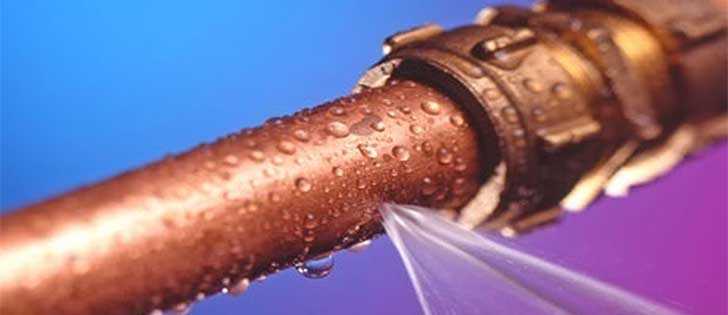Preventing a Burst Pipe: Tips for Protecting Your Plumbing During Winter
Wiki Article
Preventing Ruptured Piping: Necessary Tips to Secure Your Pipes
Stopping burst pipes is a vital concern for house owners, especially during cooler months when the danger of freezing is increased. Carrying out calculated actions such as appropriate insulation, regular inspections, and maintaining consistent indoor temperature levels can considerably minimize the chance of pipeline failure.Understand Pipe Vulnerabilities
Understanding pipeline vulnerabilities is necessary for efficient pipes maintenance and preventing costly damage. Numerous factors add to the sensitivity of pipes to ruptureds, including product composition, age, and ecological conditions. Older pipelines, particularly those made from galvanized steel or polybutylene, commonly degrade gradually, resulting in enhanced risk of leakages and tears.Temperature level fluctuations can likewise substantially impact pipeline stability. In cooler climates, water trapped in pipes can ice up, expanding and exerting stress on the pipe wall surfaces, which may ultimately bring about a burst. In addition, high water pressure can stress pipelines, specifically at joints and bends, increasing the chance of failing.

Insulate Water Lines Properly
Appropriate insulation of pipelines is crucial for preventing freezing and subsequent bursts throughout winter (burst pipe). Shielding your pipes system effectively safeguards against temperature goes down that can cause pricey damage. Begin by determining vulnerable locations where pipes are exposed to outdoor temperatures, such as basements, attic rooms, and outside wallsUse foam pipe insulation sleeves or wrap insulation tape around these areas to offer a protective obstacle. Make certain that all areas of the pipelines, especially those with restricted warm direct exposure, get sufficient insulation. Pay special focus to fittings and joints, as these are a lot more prone to freezing.
When protecting, it's important to choose products that satisfy neighborhood building ordinance and are suitable for the particular environment. Fiberglass insulation is often advised for its thermal resistance properties. In addition, take into consideration using heat cable televisions or tape in extreme problems, which can be plugged in to provide additional heat
Regularly examine protected pipes for any indicators of wear or damages, as compromised insulation can decrease its effectiveness. By taking these proactive actions, you considerably lower the risk of pipe ruptureds, guaranteeing a reputable plumbing system throughout the winter season.
Maintain Constant Temperature Level
A stable indoor temperature level is essential for stopping burst pipelines during the frigid months. When temperatures decrease, water within pipelines can ice up, expanding and producing pressure that may ultimately create the pipelines to burst.Utilizing a programmable thermostat can aid manage indoor temperature levels successfully, making sure that areas with plumbing remain warm even when the residence is empty.This small flow of water can stop freezing by relieving pressure within the pipelines. By carrying out these techniques, home owners can substantially reduce the threat of pipe bursts and safeguard their pipes systems versus the severe winter aspects.
Routinely Examine Plumbing
Regular assessments of plumbing systems are crucial for protecting against ruptured pipes and keeping general home stability. Routine checks allow homeowners to identify possible concerns prior to they rise into pricey repair services or significant water damages. During these examinations, it is important to analyze noticeable pipelines for indications of rust, leakages, or use. Pay special attention to locations prone to cold, such as basements, attics, and outside walls.Furthermore, inspecting joints and connections is important, as these points are typically vulnerable to leakages. Property owners must additionally analyze water pressure levels, as extreme stress can stress the plumbing system and boost the risk of pipeline bursts.
Take into consideration scheduling specialist plumbing examinations at the very least once a year, especially prior to winter months, to guarantee your system is prepared for chillier temperature levels. By being proactive in your method, you can protect your home versus the costly and turbulent repercussions of burst pipes.
Know Emergency Situation Procedures
Comprehending emergency situation procedures is essential for every single house owner, especially after conducting regular plumbing assessments. Being prepared for a plumbing emergency can dramatically alleviate damage and conserve expenses. Locate your primary water shut-off valve; it is usually located near the water meter or where the major line enters your home. Acquaint yourself with its procedure, as turning off the water quickly can prevent considerable flooding.
Next, keep crucial devices helpful. A pipes emergency kit should include a wrench, bettor, and towels, in addition to a flashlight and a bucket for tiny leakages. Additionally, think about having the contact details for a trusted plumbing readily available, needs to the circumstance escalate past your control.
If you detect a leakage or burst pipeline, promptly shut off the water supply and alert your plumbing technician. Record the damages with photos for insurance policy functions. Know the indications of potential pipes problems, such as uncommon water pressure changes or damp places on wall surfaces
Eventually, proactive understanding and swift activity are vital in handling pipes emergencies, guaranteeing your home Click Here stays safeguarded blog and minimizing possible damages.

Final Thought
In final thought, protecting against ruptured pipelines demands a diverse method that includes understanding pipe susceptabilities, appropriate insulation, keeping regular interior temperatures, regular inspections, and expertise of emergency procedures. By executing these necessary approaches, the risk of pipes failures can be considerably decreased, thereby making certain the durability and performance of the plumbing system. Positive procedures not only guard versus possible damages but additionally add to overall water conservation and the protection of home.In colder environments, water entraped in pipes can ice up, putting in and increasing stress on the pipeline walls, which might inevitably lead to a ruptured. When temperatures decline, water within pipes can freeze, broadening and creating stress that may inevitably cause the pipes to ruptured. By executing these strategies, house owners can significantly minimize the threat of pipe ruptureds and guard their plumbing systems versus the harsh winter months components.

Report this wiki page